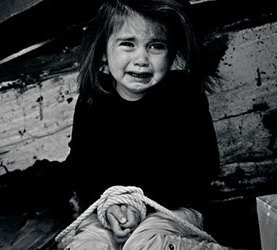Human Trafficking and the Illegal Sex Industry in Costa Rica
The promise of a job lures many Latin American youngsters to risk the chance of a better life, escaping poverty, and earning money to help their families secure a brighter future. Sadly, however, many of these youngsters, after giving up ties to their old life, soon discover the promise of a job to come to little more than slavery and become caught up in the sex trafficking industry (1). Victims have told of their ordeals in Costa Rica: being transported around various regions in Latin America and being beaten and threatened on their way. Most of the victims of sex trafficking in Costa Rica are teenagers or in their early twenties; however, there have been harrowing reports of children as young as five and six being involved. Just a few years ago, there were signs at major transport hubs in the country warning tourists against engaging in the child sex industry, and reports show it still goes on in the country today (2).
Human Trafficking
Human trafficking is one of the major problems that the Costa Rican authorities have to deal with on an on-going basis. Despite being considered a ‘Tier Two’ country with regards to human trafficking, a ranking that suggests there is only an intermediate presence of human trafficking operations, some experts have described the problems of child prostitution in Costa Rica as some of the worst in Latin America (3). Costa Rica has often been described as the child prostitution capital of the Western Hemisphere.
The situation is dire and reports are shocking. Fathers have been known to sell their own daughters into the sex industry to pay of debts and the number of children being sexually abused in Costa Rica, though based on estimates, is far higher than the global average. Once in the Sex industry it is difficult for these youngsters to escape, as there is a lack of resources to help them. The victims often seek solace in drugs, creating a further problem for the country to deal with (4). Most choose to turn a blind eye as the problem has become simply too big to deal with effectively. Without the proper resources and help groups, without action, the problem will only continue to grow and more and more children will become victims of the sex trafficking industry (5).
Why has the sex industry grown in Costa Rica?
A combination of the legalization of prostitution in Costa Rica, along with the steady rise in tourism over the past 20 years, has attributed to the boom in human trafficking operations (6). Often it is the same groups that are involved in the drug and weapon trade that are at the helm of sex trafficking operations, with the resources already in place to move people around the area under the radar. Most of the prostitution takes place at legitimate sex clubs and short term hotels, but there are also instances of sex tours for tourists and online operations.
How big is the problem?
Thousands of people, mostly women and children, are affected by sex trafficking in the country. As the sex industry is a big source of income for Costa Rica, there is much aversion to tackling the problem head on (8). Costa Rica has become well known as a source transit and destination for human trafficking and this stereotype is hard to shake. The government is making an effort to put an end to the problems, for example:
- Implementing procedures for identifying victims
- Increasing staff numbers at the anti-trafficking police unit
- The creation of a specialist team to identify trafficking victims among migrants
Despite these measures, however, the government have been criticised for not having the strength, resilience, or conviction to affect change. So far there have been little efforts made in the way of prosecuting offenders or providing assistance for victims. The government has also been accused of not doing enough to raise awareness of the problem.
What can be done to stop human trafficking in Costa Rica?
Several outside organisations and charities have attempted to shed more light on the issue by pressuring the government to introduce stricter laws and regulations on the sex industry (8). Others have also set up initiatives to help victims recover, and to encourage them to share their stories with the authorities. Various petitions have also been circulating in Costa Rica which are aimed at getting as many people involved in the effort to stop the shame of illegal sex trafficking within Costa Rica.
Hopefully our efforts, and those of others, will begin to see more and more victims coming forward and finding a way out of trafficking in the near future.
Sources
- http://gvnet.com/humantrafficking/CostaRica.htm, accessed on 06/24/15
- http://www.ticotimes.net/2014/06/12/sex-tourism-a-driver-for-human-trafficking-in-costa-rica-says-foundation,accessed on 06/24/15
- http://costarica.usembassy.gov/crtip2013.html, accessed on 06/24/15
- https://www.mentalhelp.net/substance-abuse/, accessed on 06/24/15
- http://www.narconon.org/drug-information/costa-rica-drug-addiction.html, accessed on 06/24/15
- http://www.ryot.org/love-scissors-transforms-lives-of-human-trafficking-victims-in-costa-rica/480277, accessed on 06/24/15
- http://www.refworld.org/docid/53aaba0d1a.html, accessed on 06/24/15
- http://www.protectionproject.org/wp-content/uploads/2010/09/Costa-Rica.pdf

